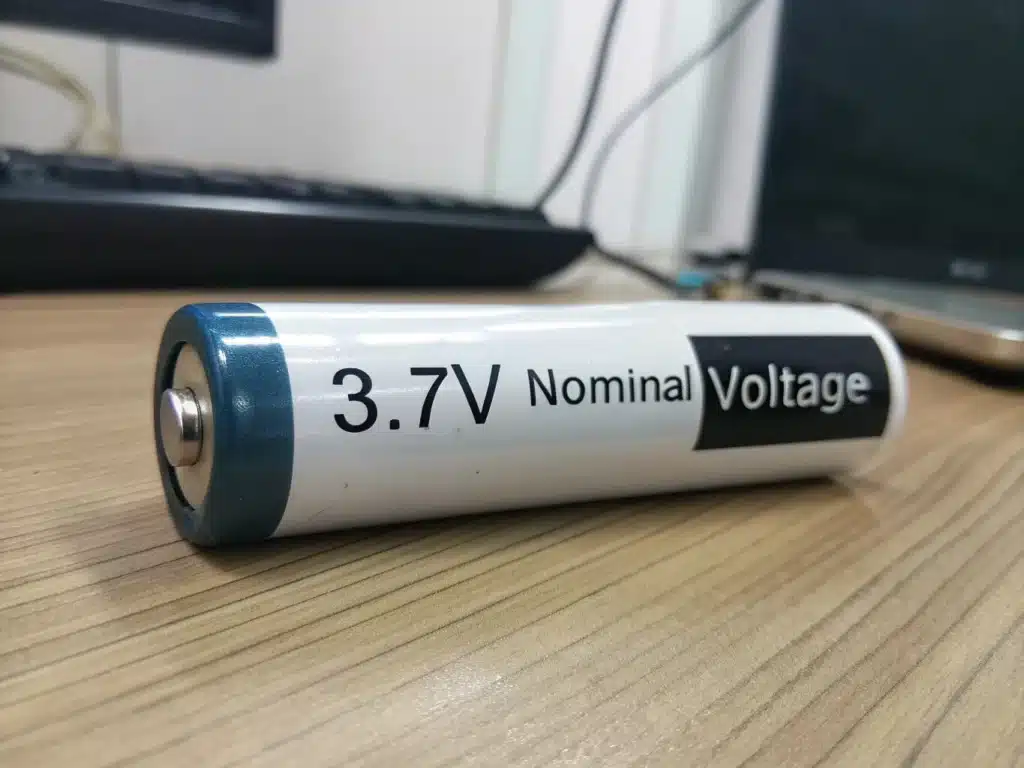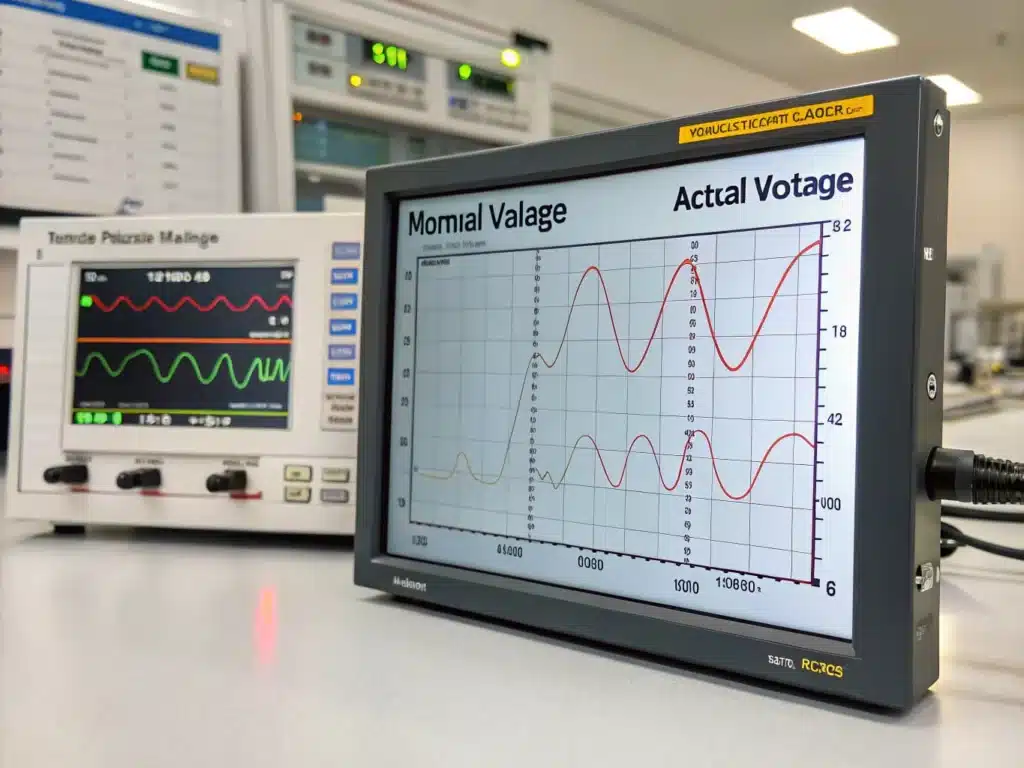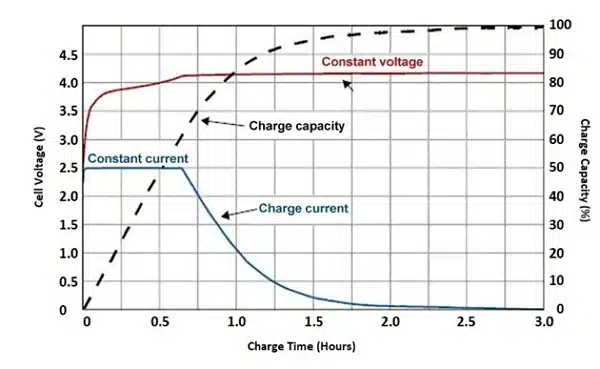Have you ever noticed some battery labels with numbers like 3.7V or 3.6V? Is it a fixed value? Or is it the maximum voltage? It is the most basic but confusing key parameter, the nominal voltage. Don’t worry! The purpose of this article is to explain to you clearly what is the nominal voltage of lithium ion battery and why it is so important to understand it.
Table of Contents
ToggleWhat is nominal voltage of lithium ion battery

The nominal voltage is a typical voltage reference value calibrated by the battery manufacturer based on the chemical system inside the battery, such as ternary lithium or lithium iron phosphate. It is not the actual voltage of the battery at a specific moment.
The nominal voltage is like the comprehensive fuel consumption of a car. This fuel consumption value is a reference data under standard test conditions, telling you the approximate fuel consumption level of the car, but when you actually drive, due to factors such as road conditions and driving habits, the actual fuel consumption may be higher or lower than this value. The nominal voltage is similar, it provides a core reference benchmark.
The nominal voltage value is neither the highest voltage when the battery is fully charged, nor the lowest cut-off voltage before the battery is completely exhausted, nor is it the constant voltage of the battery during the entire use process. To be precise, the nominal voltage is more like the average level of the voltage platform when the battery is discharged under typical load conditions.
Nominal voltage vs. actual voltage

The voltage of a lithium battery changes dynamically during its charge and discharge cycles and does not remain constant at the nominal value. This voltage change process, especially the relatively flat area during discharge, is often called a voltage plateau. In addition to the nominal voltage, you need to know the following voltage concepts:
Fully charged voltage: refers to the voltage value when the battery has just completed charging and reaches the highest voltage state allowed by its design. For ordinary lithium-ion batteries (such as lithium cobalt oxide and ternary lithium) with a nominal voltage of 3.7V or 3.6V, the fully charged voltage is usually around 4.2V.
Cut-off voltage: refers to the voltage value when the battery is discharged to its safe lower limit. In order to prevent the battery from being permanently damaged due to over-discharge, the battery protection board will set a minimum operating voltage. Once the voltage drops to this value, the PCM will cut off the discharge path. For a 3.7V nominal lithium battery, this cut-off voltage is usually set between 2.5V and 3.0V, depending on the battery design and application.
Operating Voltage: refers to the voltage of the battery at any time during actual use. It is a dynamic value, which is mainly affected by two factors:
- State of Charge (SoC): The higher the charge, the higher the voltage; the lower the charge, the lower the voltage.
- Load: The more current the device draws (the heavier the load), the faster the battery voltage will temporarily drop.

Common chemical systems and nominal voltages
You may have noticed that not all lithium batteries have a nominal voltage of 3.7V. There are many types of lithium battery technologies on the market, and their internal chemical systems are different, which is the core factor that determines their nominal voltage. The following are several common lithium batteries and their typical nominal voltages:
Lithium cobalt oxide (LiCoO₂, LCO) and ternary lithium (NMC/NCA): These are the two most widely used types of lithium batteries in consumer electronics. Their typical nominal voltage is usually 3.6V or 3.7V. However, in practical applications, these two nominal voltages can often be used interchangeably.
Lithium iron phosphate battery (LiFePO₄, LFP): This type of battery has attracted much attention in recent years, with a typical nominal voltage of 3.2V. Although the voltage platform is relatively low, LFP batteries are known for their high safety, 3000+ cycle life and good price. They are commonly used in electric vehicles, RV energy storage power supplies, home energy storage systems (ESS) and some power tools.
Lithium Titanate (Li₄Ti₅O₁₂, LTO): This is a relatively special lithium battery with a lower typical nominal voltage of about 2.4V. The biggest advantages of LTO batteries are extremely fast charging capability, extremely long cycle life, and excellent low temperature performance. It is often used in specific scenarios with extreme requirements for fast charging and life, such as some electric buses, energy storage frequency regulation, or special industrial equipment.
Why nominal voltage is important
The nominal voltage is directly related to the safety, performance and proper use of the battery. Here are a few core reasons why the nominal voltage is critical:
Equipment compatibility. This is the first and most critical reason. Almost all electrical equipment is designed around a specific operating voltage. If the nominal voltage and the motor do not match, the equipment may not start; or it may permanently damage the sensitive electronic components of the equipment or even burn out the circuit board. Severe voltage mismatch may cause safety problems such as overheating and short circuit.
Calculate battery energy. How much energy a battery can store is determined by voltage and capacity. A 10Ah, 3.7V battery (37Wh) has a higher total energy than a 10Ah, 3.2V battery (32Wh).
Assemble the battery pack. In practical applications, multiple single cells need to be combined into a battery pack to obtain the required voltage or capacity. The nominal voltage is the basis for calculating and designing the battery pack. Series connection increases voltage, connecting the batteries head to tail (positive pole to the negative pole of the next one). The total nominal voltage of the battery pack is equal to the sum of the nominal voltages of all single cells. Parallel connection increases capacity, connecting the positive poles of all batteries together and all the negative poles together, and the total capacity is equal to the sum of the capacities of all single cells.
Choose the right charger. The charging voltage is determined by the battery’s chemical system and nominal voltage. Batteries with different nominal voltages require dedicated chargers with different charging parameters. For example, a charger for 3.7V lithium-ion batteries cannot safely charge 3.2V lithium iron phosphate batteries.
Summarize
In summary, the nominal voltage of a lithium battery is a core reference value based on its internal chemical system. Remember that it is not the actual voltage that remains constant when the battery is working, and different types of lithium batteries (such as the common 3.7V and 3.2V lithium iron phosphate) have different nominal voltages. It is crucial to understand and confirm this voltage because it is directly related to whether the device is compatible, the calculation of the battery’s true energy, and how to correctly assemble battery packs in series and parallel. Welcome to contact us for the best battery pack solution.
FAQs
No, not all lithium batteries have a nominal voltage of 3.7 volts. 3.7V is the nominal voltage of many lithium batteries (especially common lithium-ion batteries and lithium polymer batteries), but the nominal voltage of lithium iron phosphate (LiFePO4) batteries is usually 3.2V.
The voltage of lithium batteries is generally between 3.0V and 4.2V, and 4.2V is the maximum charging voltage of a single lithium-ion battery. When the battery voltage is close to 4.2V, it is in a fully charged state, and when the battery voltage is close to 3.0V, the battery is almost empty. The battery voltage should not usually exceed the maximum voltage specified by its manufacturer.
The 50% voltage of a lithium battery (that is, 50% of the battery capacity) depends on the type and design of the battery. For a lithium-ion battery with a nominal voltage of 3.7V, the 50% voltage of the battery is approximately 3.6V.
For 12V lithium-ion batteries, the cut-off voltage depends on the composition of the battery. Common 12V lithium batteries are usually composed of 3.7V single lithium batteries connected in series, usually 3 single cells, so their nominal voltage is 12.6V (3.7V × 3). During the discharge process, the discharge cut-off voltage of a 12V lithium battery is usually 9V.
